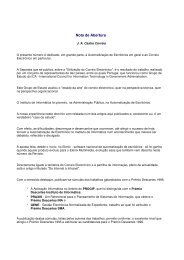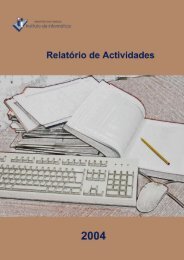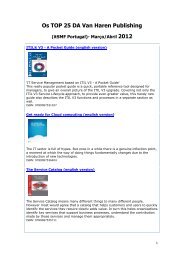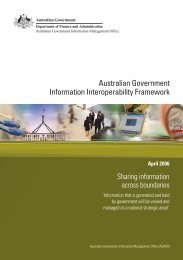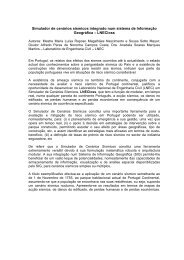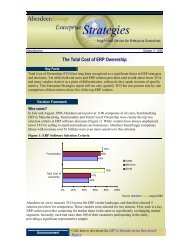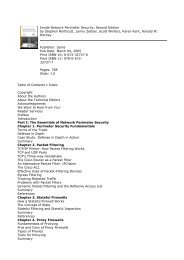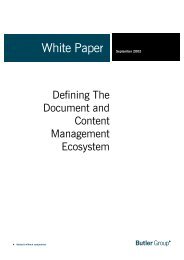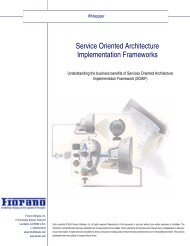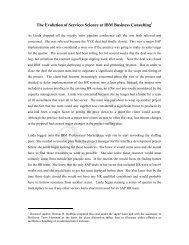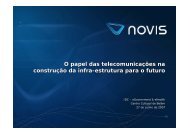OECD Peer Review of E-Government in Denmark - ePractice.eu
OECD Peer Review of E-Government in Denmark - ePractice.eu
OECD Peer Review of E-Government in Denmark - ePractice.eu
Create successful ePaper yourself
Turn your PDF publications into a flip-book with our unique Google optimized e-Paper software.
the public or private sectors worldwide. It is very complex and costly to implement with<strong>in</strong><br />
government, and also presents significant challenges <strong>in</strong> terms <strong>of</strong> equipp<strong>in</strong>g external users (both people<br />
and bus<strong>in</strong>esses) with the required knowledge, s<strong>of</strong>tware and/or hardware to use the digital certificates<br />
that are the publicly visible manifestation <strong>of</strong> the technology. To date, PKI implementations <strong>in</strong> <strong>OECD</strong><br />
countries have been challenged by their complexity, risk and high costs, which become especially<br />
acute when the size <strong>of</strong> the PKI user base is expanded beyond relatively small numbers.<br />
PKI is an area <strong>of</strong> e-government where some significant failures have been seen <strong>in</strong> recent years.<br />
This is not the case <strong>in</strong> <strong>Denmark</strong>, which has recently implemented a work<strong>in</strong>g government PKI and is<br />
mak<strong>in</strong>g ever <strong>in</strong>creas<strong>in</strong>g use <strong>of</strong> digital signatures <strong>in</strong> deliver<strong>in</strong>g services to both <strong>in</strong>dividuals and<br />
bus<strong>in</strong>esses. Under the leadership <strong>of</strong> the Jo<strong>in</strong>t Board <strong>of</strong> e-<strong>Government</strong>, development <strong>of</strong> the PKI and<br />
public sector adoption <strong>of</strong> digital signatures have been key parts <strong>of</strong> Project e-<strong>Government</strong>.<br />
In late 2001, follow<strong>in</strong>g passage <strong>of</strong> <strong>Denmark</strong>’s electronic signature legislation <strong>in</strong> 2000, the Jo<strong>in</strong>t<br />
Board took a major decision that free s<strong>of</strong>tware-based digital signatures would be <strong>of</strong>fered to citizens<br />
and bus<strong>in</strong>esses. Based on the results <strong>of</strong> digital signature pilot projects <strong>in</strong>itiated by the M<strong>in</strong>istry <strong>of</strong><br />
Research and Information Technology <strong>in</strong> 1998, the MVTU put <strong>in</strong> place a project to establish the<br />
necessary technological and organisational framework required for the <strong>in</strong>troduction and use <strong>of</strong> digital<br />
signatures (i.e. to develop the PKI). Through a project called OCES (Offentlige certifikater til<br />
elektronisk service – Public Certificates to Electronic Services) the MVTU, with the support <strong>of</strong> the<br />
National IT and Telecom Agency (ITST), set out to create a PKI that would enable:<br />
• An accessible, effective, secure and <strong>in</strong>expensive digital <strong>in</strong>frastructure for citizens, bus<strong>in</strong>esses<br />
and public authorities.<br />
• An <strong>in</strong>novative and co-ord<strong>in</strong>ated implementation <strong>of</strong> government ICT <strong>in</strong>itiatives.<br />
• Optimal and secure use <strong>of</strong> ICT and other technologies by citizens and bus<strong>in</strong>esses.<br />
Key project activities <strong>in</strong>cluded establish<strong>in</strong>g standards for digital certificates used to communicate<br />
with public authorities, creat<strong>in</strong>g contracts for implementation <strong>of</strong> the PKI and provid<strong>in</strong>g support to<br />
public authorities <strong>in</strong> implement<strong>in</strong>g digital signatures. By 2003, OCES standards for the production and<br />
management <strong>of</strong> digital certificates had been developed, and TeleDanmark A/S (TDC) had been<br />
selected as the supplier <strong>of</strong> these certificates and the support<strong>in</strong>g PKI <strong>in</strong>frastructure and management<br />
services to government. It is worth not<strong>in</strong>g that a pragmatic decision was made to make<br />
OCES-approved certificates s<strong>of</strong>tware-based and “non-qualified”, which means they are not <strong>in</strong>cluded<br />
under the provisions <strong>of</strong> the Act on Electronic Signatures and consequently need not meet requirements<br />
for face-to-face identification when apply<strong>in</strong>g for a certificate; someth<strong>in</strong>g that had been an obstacle to<br />
take-up <strong>of</strong> digital signatures <strong>in</strong> <strong>Denmark</strong>.<br />
Now that the PKI is implemented, the ITST is focused on regulat<strong>in</strong>g the PKI provider and<br />
provid<strong>in</strong>g guidance and advice to public authorities and the public on the implementation and use <strong>of</strong><br />
digital signatures. To do this it has established a Web site (www.digitalsignatur.dk) <strong>of</strong>fer<strong>in</strong>g<br />
<strong>in</strong>formation targeted to the needs <strong>of</strong> both groups. This <strong>in</strong>cludes an explanatory video presentation on<br />
digital signatures, market<strong>in</strong>g material for public authorities to use <strong>in</strong> promot<strong>in</strong>g digital signatures, and<br />
guidel<strong>in</strong>es on digital signature implementation. In addition to ma<strong>in</strong>ta<strong>in</strong><strong>in</strong>g the Web site, the ITST also<br />
provides active consultation and guidance for digital signature implementation projects. This guidance<br />
has proved very important to the <strong>in</strong>troduction <strong>of</strong> digital signatures <strong>in</strong> <strong>Denmark</strong>. As the <strong>OECD</strong> survey<br />
shows, it is the second highest area <strong>of</strong> State government provision <strong>of</strong> e-government guidance (see<br />
Figure 6.4).<br />
95



